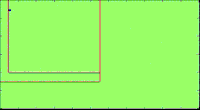
Photo from wikipedia
The reflection seismic method is the most frequently used exploration method for imaging and monitoring subsurface structures with high resolution. It has proven its qualities from the scale of regional… Click to show full abstract
The reflection seismic method is the most frequently used exploration method for imaging and monitoring subsurface structures with high resolution. It has proven its qualities from the scale of regional seismology to the scale of near-surface applications that look just a few meters below the surface. The reflection method uses controlled active sources at known positions to give rise to reflections recorded at known receiver positions. The reflections’ two-wave travel time is used to extract desired information about and image the subsurface structures. When active sources are unavailable or undesired, one can retrieve body-wave reflections from application of seismic interferometry (SI) to sources of opportunity—quakes, tremors, ambient noise, or even man-made sources not connected to the exploration campaign. We show examples of imaging of subsurface structures using reflections retrieved from quakes and ambient noise. We apply SI by autocorrelation to global earthquake to image seismic and aseismic pa...
Journal Title: Journal of the Acoustical Society of America
Year Published: 2017
Link to full text (if available)
Share on Social Media: Sign Up to like & get
recommendations!